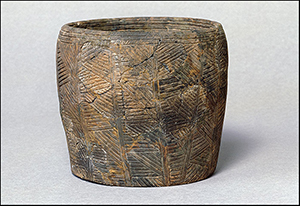Article contents
Building Stonehenge? An alternative interpretation of lipid residues in Neolithic Grooved Ware from Durrington Walls
Published online by Cambridge University Press: 15 July 2019
Abstract

Lipid residues identified in Grooved Ware pottery from Durrington Walls have been interpreted as evidence for large-scale feasting associated with the construction of Stonehenge, around 2500 BC. While a function related to food consumption is possible, other explanations may be equally plausible. An alternative interpretation not previously considered is that these residues may be related to a non-food use of animal resources, such as in the production of tallow. Such an interpretation would support the ‘greased sled’ theory for the transport of the megaliths for Stonehenge.
- Type
- Debate
- Information
- Copyright
- Copyright © Antiquity Publications Ltd, 2019
References
- 5
- Cited by


